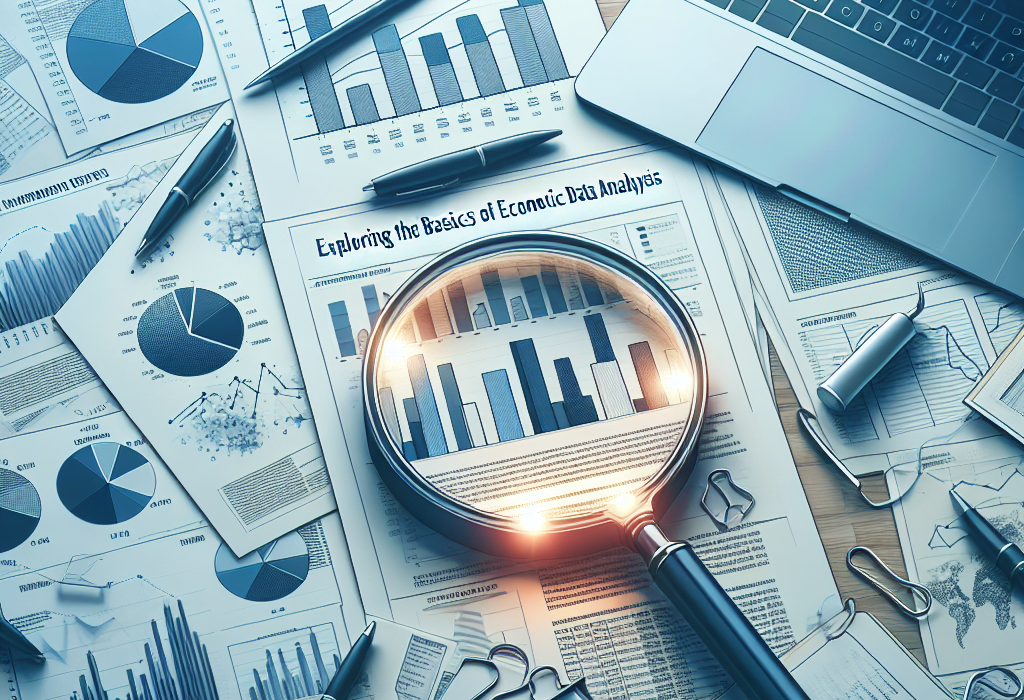Before delving into the intricate details of economic data analysis, it’s imperative to understand what it implies. Economic data analysis refers to the application of statistical tools to assess economic data in an aim to draw logical conclusions. This analysis is critical in understanding economic phenomena and in explaining economic variables’ interrelationships. The accurate interpretation of data is valuable in making strategic decisions in businesses and financial institutions. This article will explore the rudiments of economic data analysis, illuminating its importance, techniques, tools, and applications.
Importance of Economic Data Analysis
Economic data analysis underpins the formation and evaluation of economic policies. By harnessing these tools, economists can anticipate future trends, identify correlations among variables, and pinpoint causes of specific economic actions. Commercial businesses, banks and government bodies employ economic data analysis to predict economic changes and prepare for possible repercussions. The data provides valuable insights which inform policy making decisions and confirm their effectiveness post implementation.
Economic Data Types
There are two types of economic data: qualitative and quantitative data. Qualitative data includes non-numerical information such as customer satisfaction surveys, management reports and reviews. Alternatively, quantitative data includes numerical data that can be measured, counted or expressed using digits. Examples include national income, population census, stock indexes, consumer price indexes, etc. Historical, cross-sectional, and time series data are other crucial categories of quantitative data.
Steps in Economic Data Analysis
Economic data analysis involves a series of structured steps. These include:
- Data Collection: This is the initial step in economic data analysis. The data to be analyzed can be sourced from primary or secondary sources. Primary sources include firsthand information from surveys or interviews, while secondary sources involve already published research or records.
- Data Cleaning: After data is collected, it must be cleansed to ensure its reliability. This involves dealing with missing values, removing outliers, and deciphering inconsistent data.
- Data Analysis: At this stage, appropriate statistical tools are applied to the cleaned data to draw meaningful conclusions. Regression analysis, correlation analysis, and time series analysis are some common techniques used to analyze economic data.
- Data Visualization: Once the data has been analyzed, it is visualized to simplify understanding. Visuals like graphs and charts help in illustrating the relationships between different variables.
- Data Interpretation: This is the final step where the visualized data is interpreted and conclusions are drawn based on the analysis carried out.
Tools for Economic Data Analysis
Various tools are available for economic data analysis. These include software like Excel, Stata, SAS, R and Python. Each tool has its unique features and applications, and the choice of tool depends on the nature of the data and the intended analysis output.
Applications of Economic Data Analysis
Economic data analysis finds application in several areas. It plays a major role in fiscal policy decision-making, investment strategy formulation, and identification of market trends. Businesses utilize economic data analysis as an insightful tool for assessing market opportunities and threats, whilst governments use it to ensure the equitable distribution of societal wealth.
Conclusion
The exploration of economic data analysis basics uncovers the indispensable role data plays in the economic world. The integral part that economic data analysis plays in informed decision making cannot be undermined. It provides clarity in decision making, shaping policies to suit the dynamic economic global landscape. Whether it’s addressing inflation, unemployment, poverty, or economic growth, economic data analysis is the fulcrum supporting successful economics.
Frequently Asked Questions
- What is economic data analysis?
Economic data analysis is the application of statistical tools to assess economic data, leading to logical conclusions about economic phenomena and relationships between economic variables.
- Why is economic data analysis important?
Economic data analysis is crucial in predicting future trends, identifying correlations among variables, pinpointing causes of specific economic activities, and strategizing decisions in businesses and institutions.
- What are the steps involved in economic data analysis?
The steps involved in economic data analysis are data collection, data cleaning, data analysis, data visualization, and data interpretation.
- What are the tools for economic data analysis?
Some tools for economic data analysis include Excel, Stata, SAS, R, and Python.
- Where is economic data analysis applied?
Economic data analysis is applied in fiscal policy decision-making, investment strategy formulation, identification of market trends, and assessment of market opportunities and threats.













